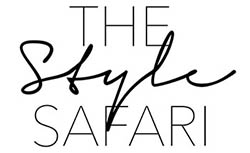I try really hard to shop sustainably, embrace slow fashion and use only clean beauty products. I have made great strides in my beauty routine (mostly because I find that the non-toxic products and brands I use are just as good if not better than not clean beauty products). However, clothing has been a little more difficult. I have found lots of great brands and options, but the lines are quite a but more blurry on what is ‘sustainable’. I could only buy hemp clothing in the US, but if I buy a lot of it and dispose of it frequently, then I’m not sure that’s solving any problems. The idea is to learn more and make better decisions as you go, slowly finding ways that fit your lifestyle. Maybe it’s only buying organic fabrics, or fair trade made clothing, maybe it’s buying less overall, or re-fashioning your pieces into other items. Whatever works for you might not work for the next person. So, I’m sharing with you 5 ways I embrace sustainable fashion … and 3 I can’t seem to grapple with. Hopefully this helps you in your own decision making and shopping habits!
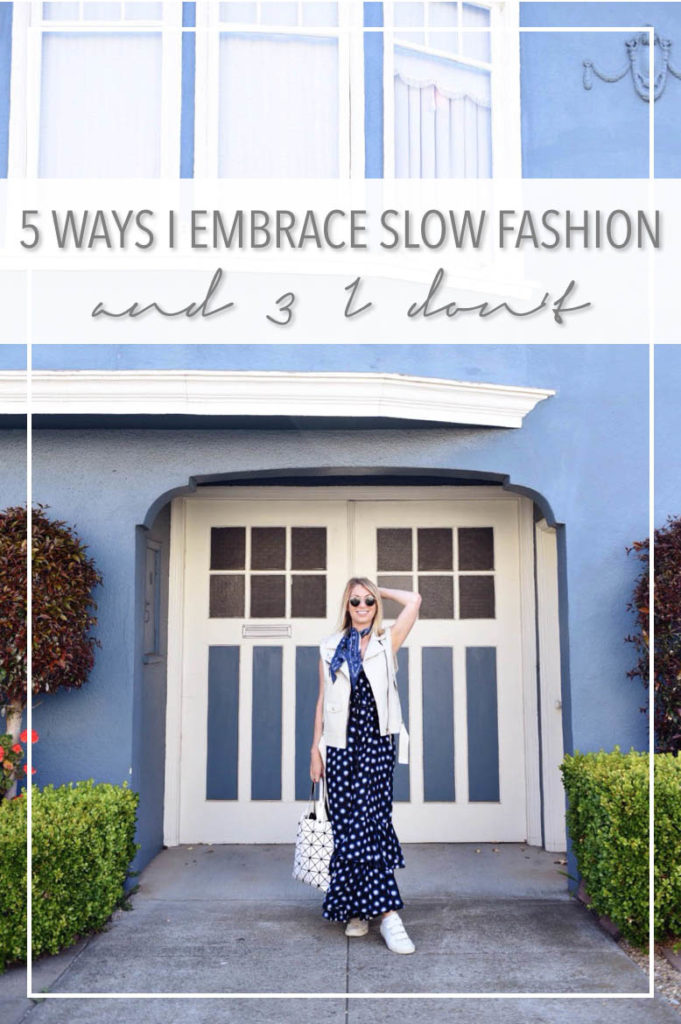
5 Ways I Embrace Sustainable Fashion
I use Rent the Runway Unlimited
You have all heard me talk about this before so there is no need for me to go on and on, but basically, I use Rent the Runway’s Unlimited service to satisfy my need for bold colors, prints and this seasons’ trends, without purchasing and owning it myself. I can rent up to 4 items at a time (for as long as I like), which is especially fantastic for trips. I can rent a dress for a wedding, the rehearsal dinner, a bag and an earring, and when I go home, it all goes back. I especially love the service when I go to cold weather destinations in the winter. I can borrow a new coat, thick sweater or leather leggings and not have to break the bank. For the amount of travel I do, it’s essential for me to focus my spending elsewhere, and participate in the shared economy.
I Buy Less!
This has to be the biggest change for me. I am now averaging 5 items a month, which is down 70% to 2016’s 15 items. Last year, I challenged myself to 8 items a month, and while at first it was difficult, it became easier and easier as time went one. Later on in the year when I became very pregnant and rented almost my entire wardrobe, my shopping habits were completely re-set. This year, with the addition of a baby and No Buy July, I rarely shop, which offsets the 2-3x a year that I go a little heavier on my wallet (usually the start of a new season). I think that this is the single biggest change to embrace sustainable fashion. Yes, there are so many trends that I want to participate in, but I have to ask myself, what happens after I take the picture and post it to my instagram? Will I wear it again? What will the next caption be? Will I wear it again 6 months from now? If the answer is no, then I won’t allow myself to buy it!
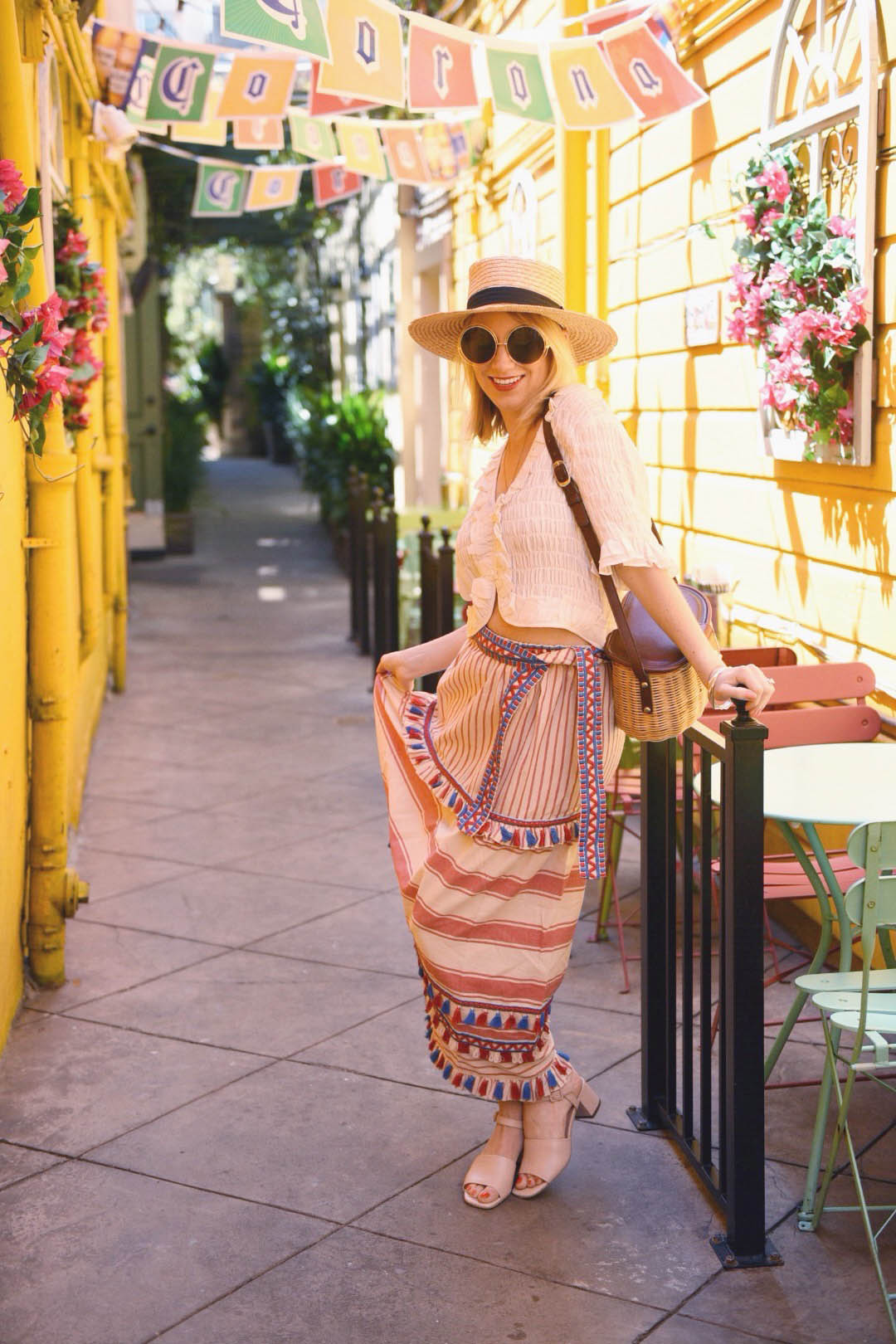
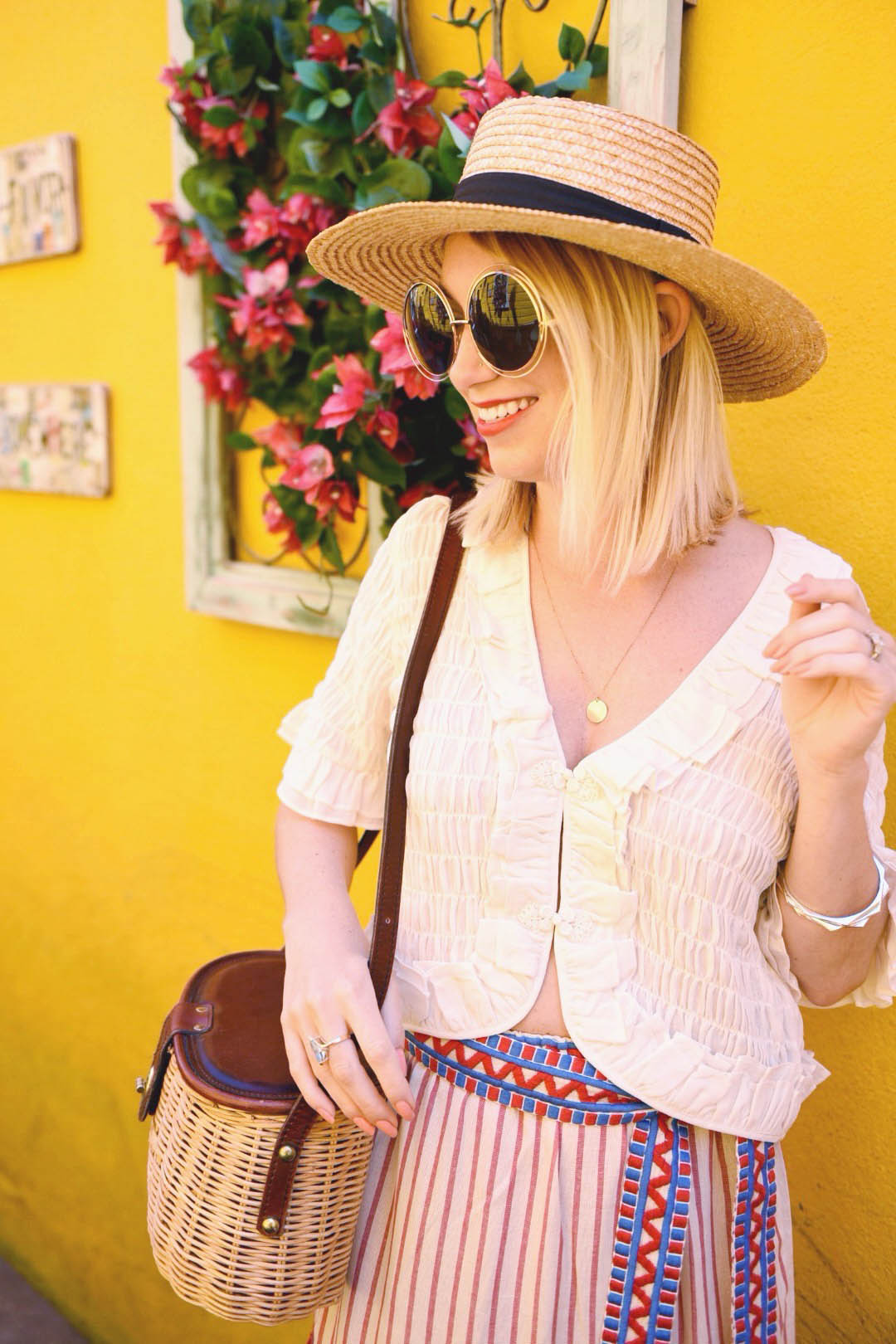
{Reformation blouse, Everlane Block Heel Sandal, Dodo Bar Or #FairTrade skirt, Vintage Brooks Brother Basket Bag}
I Re-Sell instead of Donate
Don’t get me wrong, there is nothing wrong with donating gently used clothing. However, if you can sell it or consign it (or give it!) to someone who you know wants it, then the second life of that product is guaranteed. Donating it to the Salvation Army where they are overloaded with junk product doesn’t mean it will ever get out of the bag, and most likely will get thrown into landfill somewhere, especially if it a low quality, high-trend product. I also like that some of the places to resell, like ThredUp, will dispose of your clothing in a sustainable way (like to factory that will turn them into pillow and mattress stuffings) if they are not able to sell it. Read more about how I sell on Poshmark vs. ThredUp here.
I Buy Items made in the US or Europe
The simple fact here is that I can trust that items made in the US or in Europe/Japan are Fair Trade, because these countries all have fair labor laws. This is not to say that other countries are automatically paying their workers unfairly, but that the government does not hold employers to the same standard. Of course, this is why items made in these countries are more expensive! Consider the fact that minimum wage in California is going up to $15/hr. How could they possibly make you a $40 t-shirt? They can’t! So instead it costs $80, but at least by buying in you are saying that you value the worker who made it. Companies like Everlane disclose how much they pay their factory workers for each item, so you can find products that are made in other countries, but are still made ethically. Retailers like Free People, Athleta, and Anthropologie often have quite a bit of product made in the USA, so if you are hunting online, type in ‘Made in USA’ in the search bar to find items.
I Wash my Clothing Less Often (and don’t buy Dry Clean Only!)
Disgusting? Maybe. But the only item that goes straight into my hamper after one wear is underwear. Yes, I often re-wear sports bras, socks, and other workout clothes at least twice before washing, and other clothing items only when they are stained or smell. I realize this doesn’t work for many people who sweat a lot more than I. But be conscious of how often you throw something in the laundry. Not only does it take a lot of water to run a wash, but every time you wash any product you shorten that product’s life. Meaning, more clothing in landfill. Buy a fabric re-fresh spray from the Eco-Chic laundry brand The Laundress, and give your clothes a fresh iron and they will look good as new!
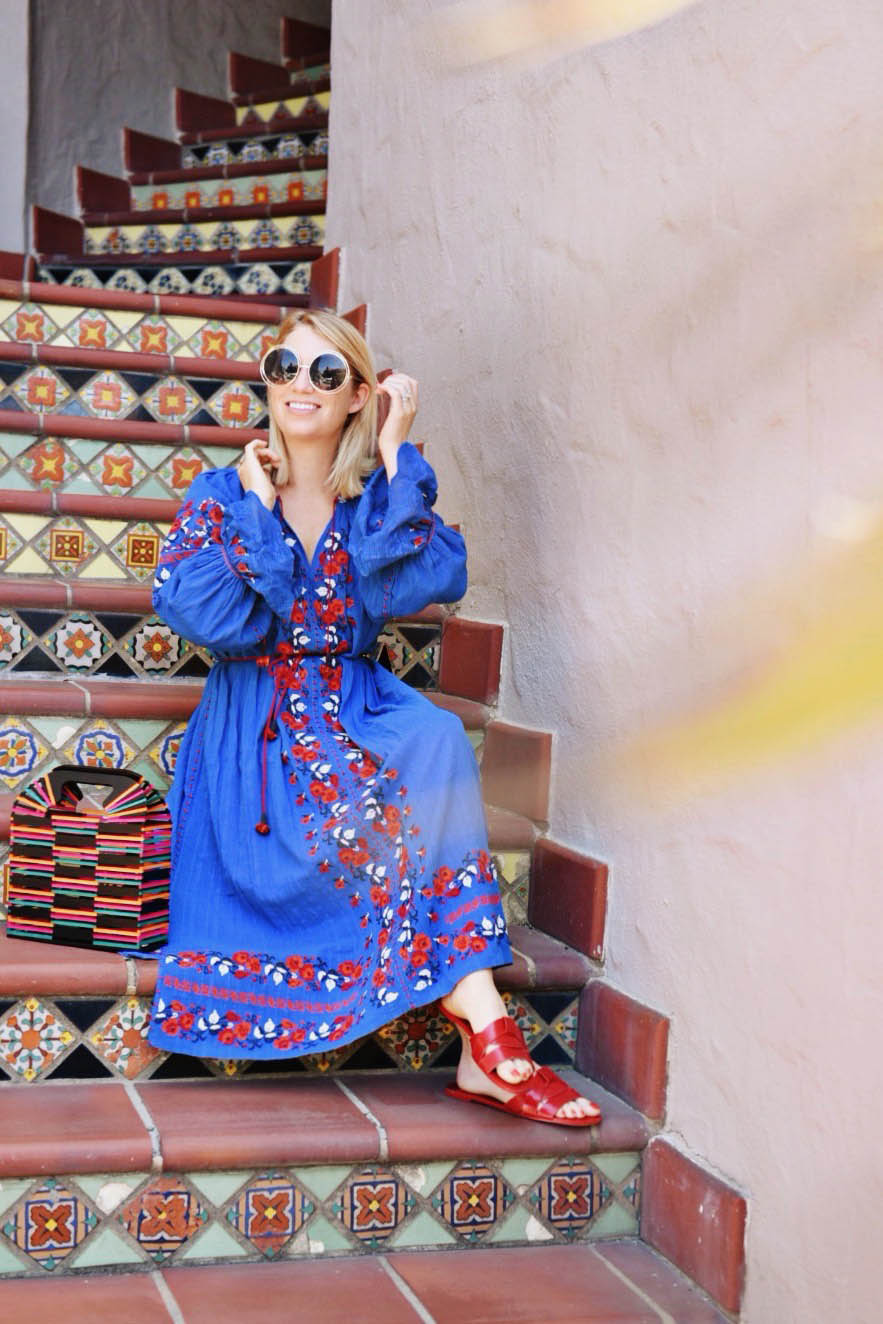
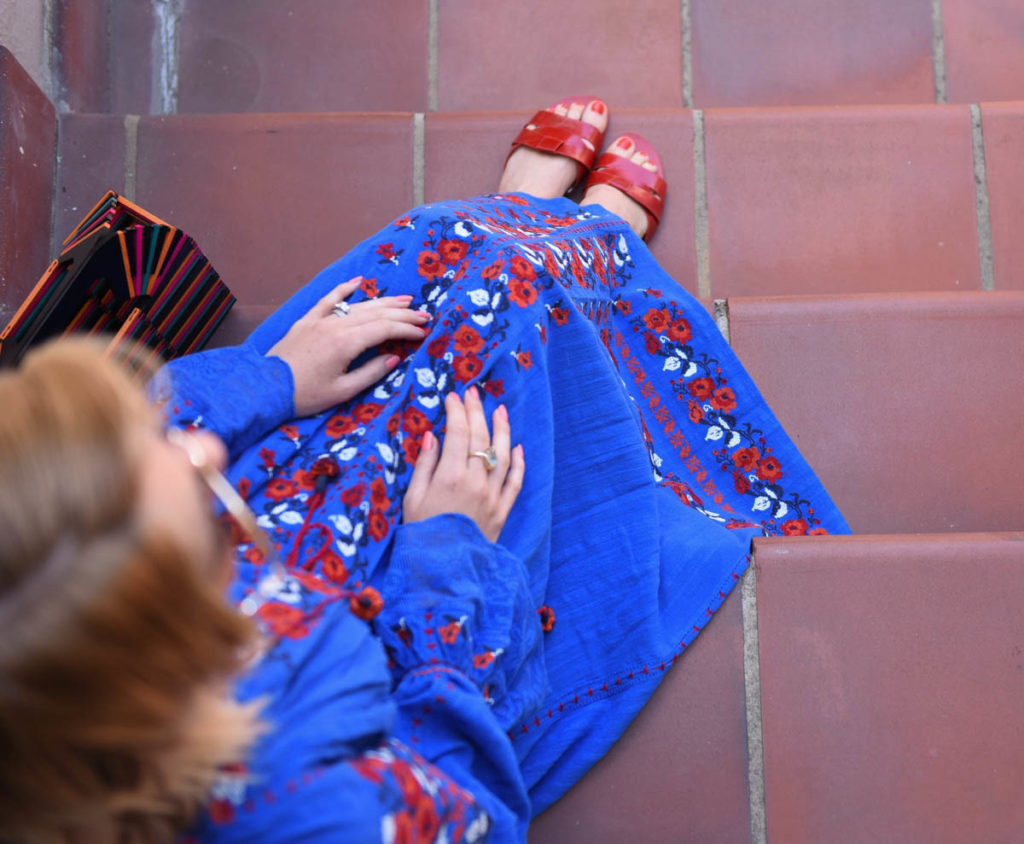
{Ulla Johnson #FairTrade Dress, Zara Sandals, ASOS bag}
3 Ways I Don’t Embrace Sustainable Fashion
I Still Buy Fast Fashion
I hate to admit this one, but it’s hard to teach an old dog new tricks. Trust me, I also buy from sustainable brands like Everlane and Reformation, but Zara is still my favorite place to shop. I don’t treat it like fast fashion, however. These items are often still over $100, and last me years. I still go in with the mindset of ‘this item has to serve me a while’, or I won’t buy it. My favorite blazer is 10 years old and it’s from Zara! And since overall I am buying less clothing, I think that I am still making an impact. You are free to disagree.
I Don’t Believe in Capsule Wardrobes
There will be an entire post on this eventually, but I don’t think that we should all be running around in jeans and white tees. What a boring world that would be! Of course I like the idea of doing more with less, and re-thinking and repurposing items in your closet. And I think a capsule wardrobe is perfect for someone who doesn’t want to think about what to wear, or doesn’t like expressing herself through the way she looks. That person however, is not me.
I Don’t Always Buy ‘Sustainable’ Fabrics
If you try to shop sustainably, the most likely you too struggle with this. Frankly, it’s confusing. On one hand, natural fibers like linen and cotton are the best because it disposed of, they will naturally biodegrade. On the other hand, cotton is one of the most water intensive crops to grow, and organic cotton is even worse. Naturally occurring dyes tend to me softer in color and wash out over time. However if you use a chemical to make the color stronger or last longer… then of course you are using chemicals that a worker could injest or could seep into nearby water. These rules confuse me, and I’m someone who studied fiber science in school and have read tons of books on sustainable fashion. It is hard to find a happy medium when picking fabrics and I don’t have the right answer. I generally try to stay away from lurex and fabrics that feel disgustingly fake or slimy, but that’s really the only thing I know for sure. Every other purchase is a balancing act between fabric, style, trend, location it’s made, and of course, price.
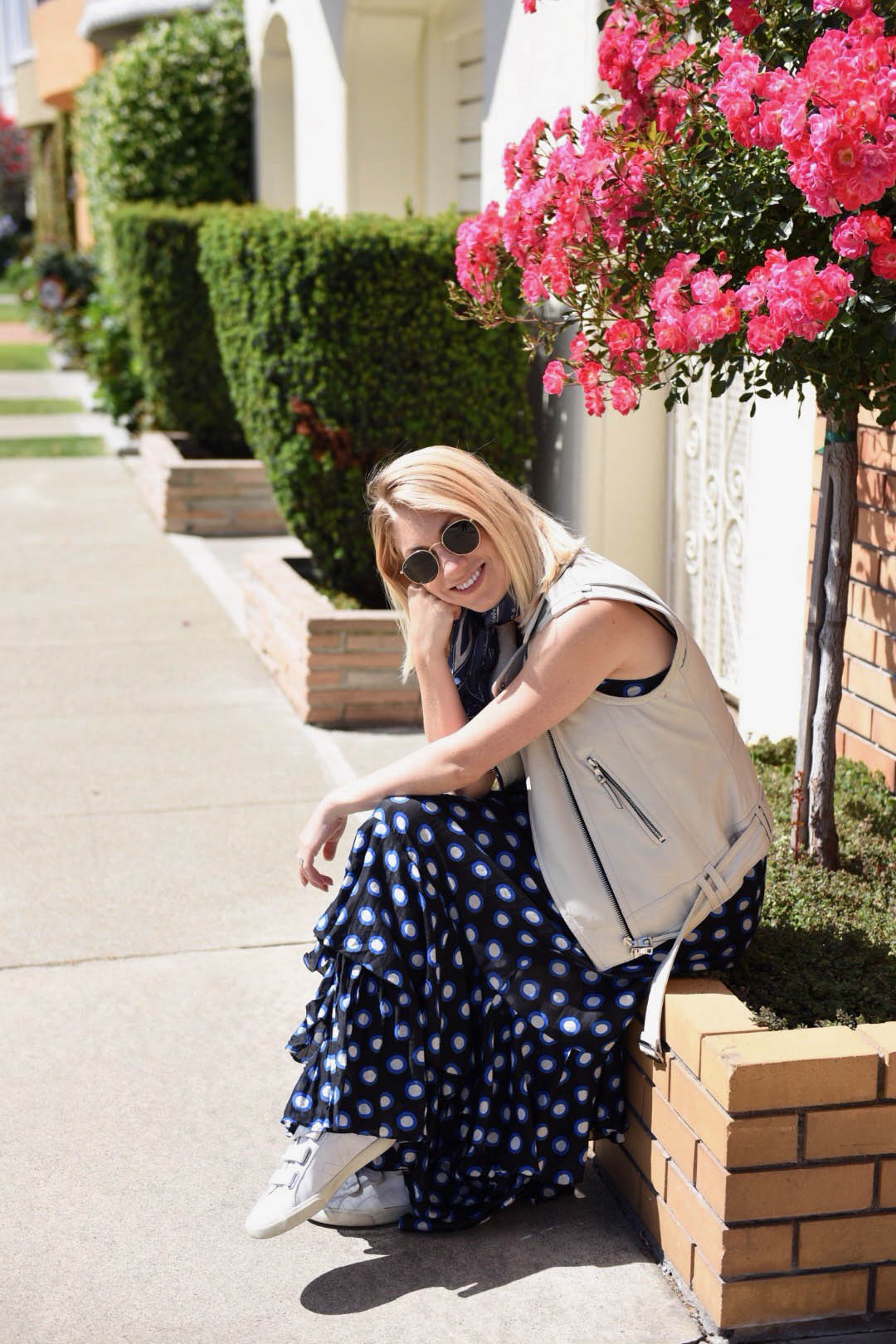
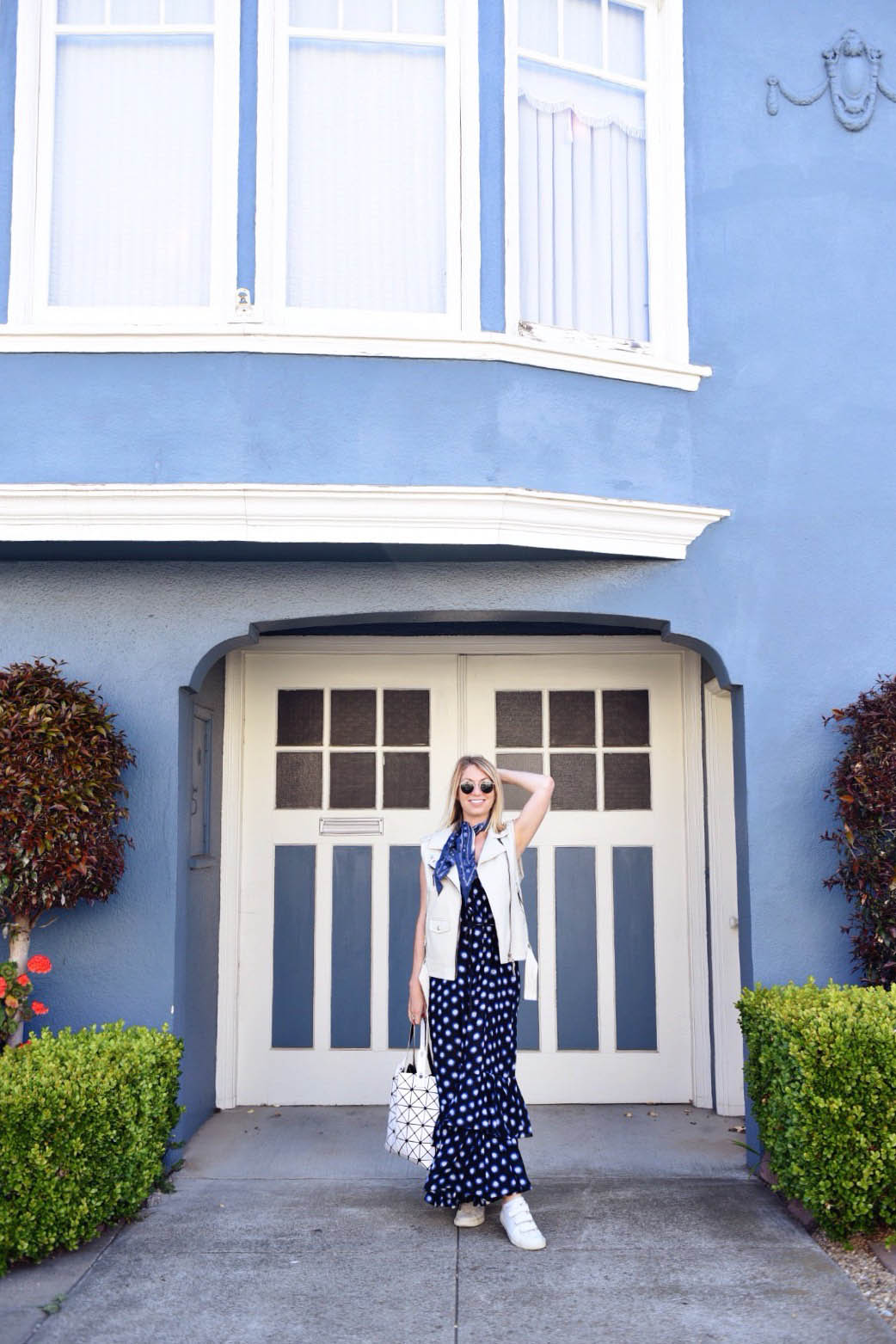
{Moschino Dress via Rent the Runway, vintage Coach vest, Veja Sneakers, Issey Miyake Bag}
